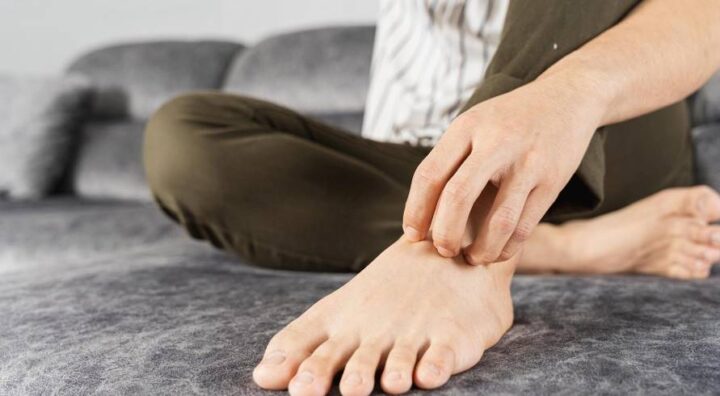
What flea bites look like on humans
Flea bites are not as common as mosquito bites, for example. That’s why those affected are often unsure about what stung them. Find out how flea bites can typically be identified.
Flea bites (flea stings) rarely appear individually, but usually always in groups. Typically, three to four flea bites are grouped in a row, which is why experts also speak of flea streets, cul-de-sacs or flea ladders with this characteristic appearance.
The reason for the multiple flea bites is that fleas, so to speak, first test bites before they find a suitable place for their blood meal. This stitch pattern is sometimes jokingly referred to as “Breakfast, Lunch, Dinner”.
After a flea bite, a wheal and/or a red patch of skin typically develops as an early reaction in the first 10 to 30 minutes. Severe itching is often noticeable even now.
About 12 to 24 hours after the flea bite, a severely itchy papule occurs as a so-called late reaction, i.e. a reddened, raised nodule on the skin. In the middle of the sting, a punctiform hemorrhage can often be seen, surrounded by a red area.
Flea bites are particularly common on the legs, particularly the ankles, feet or calves. This is because fleas cannot fly, but can jump up to 30 centimeters high. That is why they attack people mainly near the ground.
That changes when there is a flea infestation in bed – then the nocturnal little bloodsuckers help themselves to the lying body. In such a case, those affected often notice flea bites around the waist, around the waistband, or on the legs.
Unless flea bites are scratched open, they usually heal on their own after a few days without further complications. Until then, the unpleasant itching can be effectively alleviated with various means.
Categories: General
